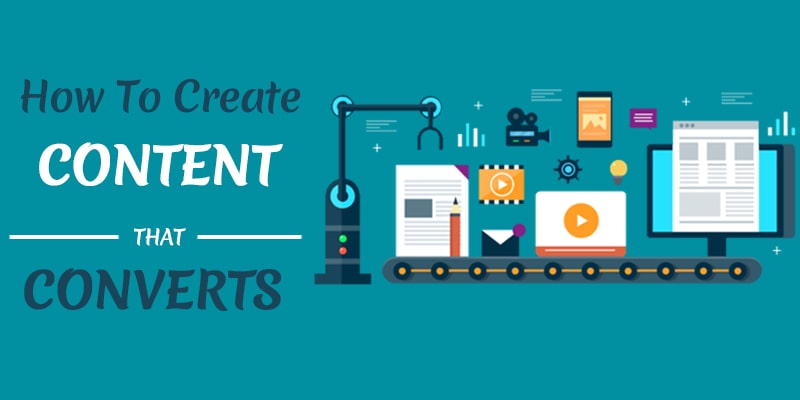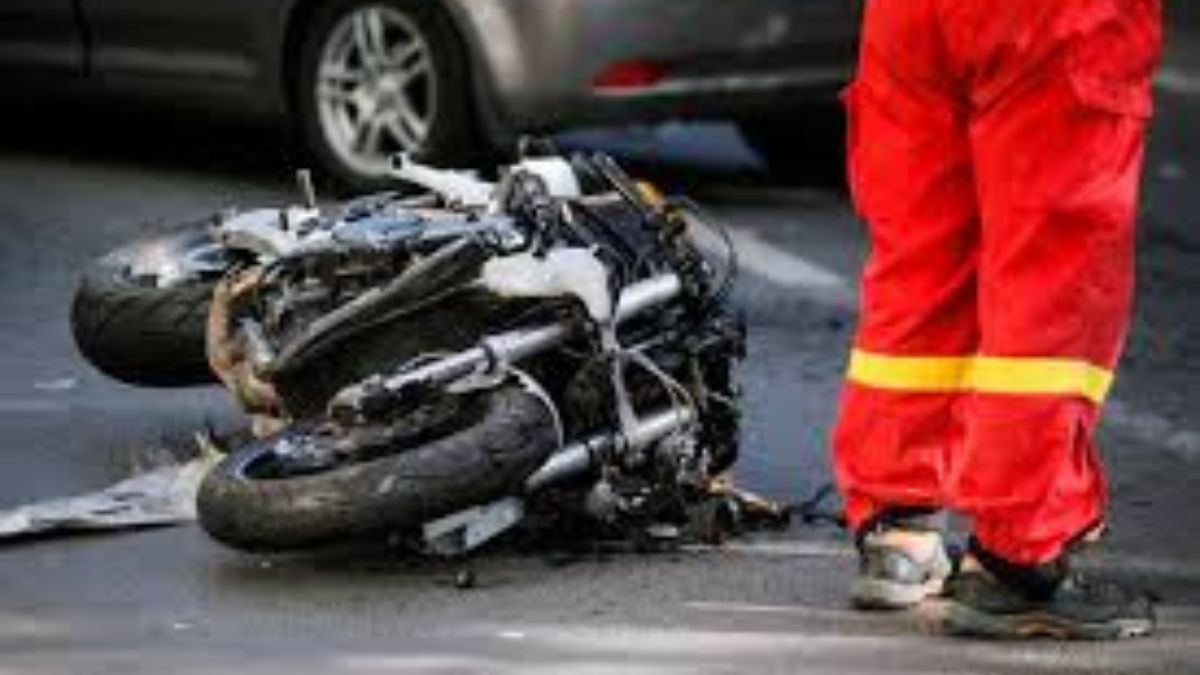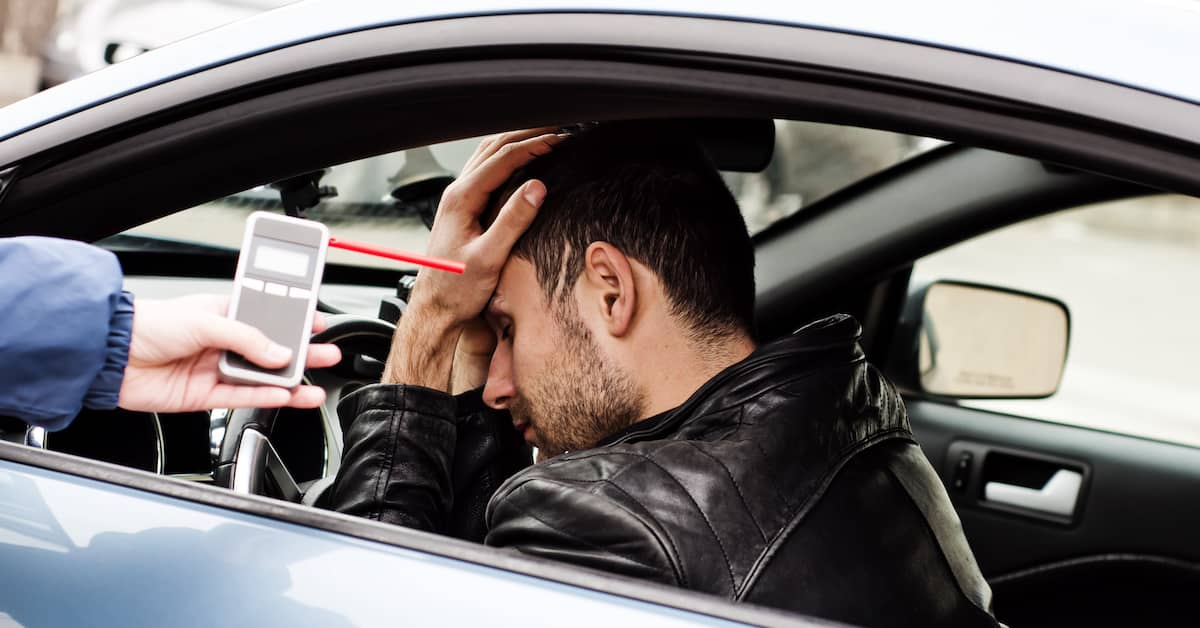TOPIC
How to Create High-Value B2B Content That Converts

In the world of business-to-business (B2B) marketing, content is not just king; it’s the cornerstone upon which successful relationships are built. High-quality, well-crafted content can attract prospects, engage decision-makers, and ultimately drive conversions. However, creating B2B content that truly converts isn’t as straightforward as publishing an article or posting a blog. It requires a deep understanding of your target audience, a strategic approach, and content that addresses real business challenges.
For B2B marketers, the stakes are high. Content must not only inform but also inspire trust and influence purchasing decisions. With the rise of digital channels and the growing sophistication of B2B buyers, content creation is evolving, and staying ahead of the curve is critical. In this post, we’ll walk through practical strategies and tips on how to create B2B content that doesn’t just generate traffic but converts leads into long-term clients.
Why B2B Content is Crucial for Conversions
B2B content marketing is a unique challenge compared to business-to-consumer (B2C) strategies. In B2B, purchases are typically larger, more complex, and involve multiple stakeholders. Decision-making processes can take months, requiring consistent, informative, and persuasive content at every stage of the buyer’s journey.
In order to create content that converts in the B2B world, it’s essential to focus on addressing pain points, offering solutions, and positioning your business as a trusted expert. High-value content doesn’t just push products or services—it builds relationships, educates prospects, and fosters a deep sense of trust and understanding.
Understanding Your Audience and Their Needs
Before creating content, understanding your target audience is paramount. In the B2B landscape, your audience consists of businesses or professionals with specific needs, and the content you create must address these needs directly.
1. Define Your Ideal Customer Profile (ICP)
An ICP is a detailed description of the businesses that would benefit most from your product or service. This profile will guide your content creation by helping you understand the types of problems your target audience faces and how your solution can help solve them. Knowing your ICP will ensure that your content speaks directly to the right individuals and addresses their specific pain points.
For Example, A web development agency has an ideal customer might be a small to medium-sized business looking for a custom website that boosts its online presence. Your content should then focus on topics like website optimization, the importance of mobile-friendly design, and how a well-developed website can drive business success.
2. Map the Buyer’s Journey
Understanding the buyer’s journey is another crucial step in creating B2B content that converts. The buyer’s journey is typically divided into three stages: Awareness, Consideration, and Decision. Each stage requires different types of content, tailored to the buyer’s mindset at that point.
- Awareness Stage: At this stage, the buyer is experiencing a problem and is looking for information. Content like blog posts, infographics, and educational videos work well here.
- Consideration Stage: Buyers have identified their problem and are exploring potential solutions. Whitepapers, case studies, and webinars are highly effective in this stage.
- Decision Stage: Buyers are ready to make a purchase decision. Content like product demos, testimonials, and pricing guides are persuasive tools at this point.
By aligning your content strategy with the buyer’s journey, you can ensure that you are providing the right content at the right time.
Creating High-Value Content
Creating content that adds value to your audience’s journey is what will set you apart in a competitive B2B market. Here are some strategies for creating high-value content that will engage your audience and drive conversions:
1. Focus on Educational Content
In B2B marketing, the goal is often to inform and educate, rather than to sell directly. High-value educational content establishes your authority in your industry and builds trust with your audience. Think about what your target audience needs to learn to make informed decisions.
For example, a CentricDXB company creates a series of blog posts explaining how a great website design can impact conversion rates, SEO strategies, or customer retention. Providing valuable insights that solve real business challenges positions you as an expert and a go-to resource, making potential clients more likely to turn to you when they are ready to purchase.
2. Leverage Case Studies and Testimonials
Nothing builds trust like proof of success. Case studies and customer testimonials demonstrate your ability to solve real-world problems. When creating case studies, focus on the specific outcomes and metrics that demonstrate how your product or service improved the customer’s business. Include details such as how you helped them save time, increase efficiency, or improve ROI.
For instance, a web development agency could showcase how they helped a client increase website traffic by 30% through SEO-optimized designs and fast loading speeds. Case studies give prospects confidence in your ability to deliver on your promises.
3. Offer Tools and Resources
In addition to traditional content types like blogs and articles, consider offering tools, templates, and resources that your audience can use. These can be incredibly valuable in the B2B space, where businesses are often looking for ways to streamline processes and improve efficiency.
For example, a green marketing agency could offer a carbon footprint calculator that businesses can use to assess their environmental impact. By providing free tools or resources, you not only add value to your audience’s experience but also increase the chances of them converting into leads.
4. Create Long-Form Content
Long-form content such as in-depth guides, eBooks, and whitepapers are excellent for B2B marketing because they allow you to dive deep into topics that are important to your audience. While shorter blog posts are great for quick insights, long-form content gives you the space to provide comprehensive, actionable information.
A well-researched and well-written whitepaper on a relevant industry trend can position you as a thought leader in your space. In return, you can use this content to capture leads by gating it behind a form where visitors must enter their contact information to access it.
5. Optimize for SEO
Content is only valuable if it’s discoverable. Search engine optimization (SEO) plays a huge role in making sure your content gets seen by the right audience. Optimize your content with relevant keywords that your target audience is searching for. However, avoid keyword stuffing; focus on creating content that answers the questions and needs of your audience while naturally incorporating SEO best practices.
For example, a web development agency could target keywords such as “how to improve website speed” or “best practices for mobile-friendly web design” to attract the right prospects who are searching for solutions.
Distributing and Promoting Your Content
Creating high-value content is only part of the equation. To drive conversions, you must ensure your content reaches the right people. Here are a few tips for effective distribution and promotion:
1. Leverage Social Media and LinkedIn
Social media platforms like LinkedIn are essential for B2B content distribution. Share your content on these platforms to reach a wider audience, engage with potential clients, and encourage them to learn more about your services. LinkedIn is especially powerful for targeting professionals and decision-makers within organizations.
2. Use Email Marketing
Email marketing remains one of the most effective B2B marketing tactics. Segment your email list based on factors like industry, job title, or stage in the buyer’s journey, and send targeted content to each group. This ensures that you’re sending the right message to the right people at the right time.
3. Invest in Paid Advertising
If you’re looking to amplify your content, consider investing in paid advertising through Google Ads or LinkedIn Ads. Paid ads allow you to target specific keywords or demographics, making sure your content reaches a relevant audience.
4. Promote Content Through Partnerships and Backlinks
Building backlinks is an essential part of any content strategy. Reach out to industry influencers, partners, or websites to promote your content and get valuable backlinks. This not only drives traffic to your site but also improves your SEO ranking.
Conclusion
Creating high-value B2B content that converts requires a deep understanding of your audience, their pain points, and how your solutions can help them succeed. By focusing on educational, informative content that speaks directly to your audience’s needs and challenges, you position yourself as a trusted advisor rather than just a vendor. Case studies, long-form content, and actionable resources are all great tools to engage prospects and drive conversions.
For businesses looking to take their content marketing to the next level, partnering with a web development agency that understands the nuances of B2B content creation can be an invaluable asset. Whether you are crafting content that educates, entertains or converts, always remember that the key is providing value that resonates with your target audience’s business goals and challenges.
By applying these strategies, you can create B2B content that not only attracts attention but also drives tangible business results.
TOPIC
What If a Motorcycle Defect Caused Your Crash?

Imagine riding your motorcycle, feeling the wind, when suddenly, disaster strikes. You crash. It’s terrifying and confusing. What if a defect in your motorcycle caused this tragedy? You need answers. A defective part could risk your safety more than you realize. You deserve to know the truth behind the accident and hold the right parties accountable. The journey to uncovering the cause starts with understanding what went wrong. Was it a faulty brake, ineffective steering, or a weak frame? Each could spell disaster. You must act swiftly to protect yourself and others. Learning who is responsible can empower you to prevent future harm. If you suspect a defect, it’s crucial to seek expert advice. Knowing where to turn is important. Inquire here for guidance on what steps to take next. Remember, taking action isn’t just about justice. It’s about safety and prevention.
Identifying the Defect
The first step in addressing a motorcycle defect is identifying the problem. Mechanical issues can range from minor to severe. Some common defects include brake failure, steering malfunctions, and structural weaknesses. These defects can result from manufacturing errors or design flaws. Recognizing a defect requires keen observation and sometimes expert assistance. If you notice unusual sounds, reduced performance, or if something feels off, you may be dealing with a defect.
Types of Common Motorcycle Defects
Understanding the types of defects helps in determining next steps. Below is a table summarizing common defects:
| Defect Type | Possible Consequences |
| Brake Failure | Increased stopping distance, collisions |
| Steering Malfunction | Loss of control, veering off-road |
| Structural Weakness | Frame collapse, severe injury |
Taking Action
Once you suspect a defect, action is necessary. Report the issue to the manufacturer and consult with a legal professional. It’s not just about getting compensation. It’s about preventing similar incidents. If you’re unsure how to proceed, resources are available. For more information on vehicle safety and defects, visit the National Highway Traffic Safety Administration website.
Legal Implications
Understanding the legal landscape is essential. If a defect caused your crash, you might have a case against the manufacturer or distributor. Lawsuits can be complex. They often require proving the defect and its direct link to the crash. Legal experts can guide you through this process. They help gather evidence and build a strong case.
Preventing Future Incidents
Prevention is crucial. Regular maintenance and inspections are key. Always check for recalls related to your motorcycle model. Keeping your motorcycle in top condition reduces the risk of defects. Educating yourself about potential risks empowers you to make informed decisions. It ensures your safety and the safety of others on the road.
Conclusion
A motorcycle accident caused by a defect is more than an unfortunate event. It’s a call to action. Recognizing defects, taking appropriate steps, and preventing future incidents are essential. Staying informed and proactive ensures safer rides for everyone. Remember, the road to safety starts with awareness and decisive action.
TOPIC
How Wildlife‑Related Crashes Affect Liability And Insurance Claims

Every year, wildlife causes thousands of accidents on our roads. These crashes can be distressing and lead to unexpected consequences. When you collide with an animal, you’re not just facing potential damage to your car. You might also deal with serious injuries and complex insurance claims. Understanding your liability in these situations is crucial. Insurance policies often vary, and knowing what to expect can help you navigate this tricky situation. You may wonder about coverage for repairs and medical costs. Or perhaps you’re concerned about how this affects your insurance rates. Each situation is different, and the details matter. Learn about your rights and responsibilities to protect yourself better. It’s essential to stay informed. As you drive, stay alert and watch the road. Discover more about how wildlife-related crashes impact your insurance claims and liabilities. Your awareness could make a significant difference in your life.
Understanding Wildlife-Related Crashes
Encountering wildlife on the road can be sudden and frightening. Animals like deer, moose, and even smaller animals pose significant risks. The damage can be extensive, affecting both your vehicle and your peace of mind. These incidents often happen during dawn and dusk when animals are most active. Avoiding such crashes requires vigilance and quick reactions. However, accidents still occur despite your best efforts.
Liability in Wildlife-Related Accidents
Determining liability in wildlife accidents is often complex. Generally, no one owns wild animals, so the responsibility doesn’t fall on a specific party. If you collide with wildlife, liability typically rests with the driver. This means you could be responsible for repair costs and potential increases in insurance premiums. Knowing what your insurance covers is essential. Comprehensive coverage often includes animal collisions, while liability insurance does not. Reviewing your policy details can prevent surprises later.
Insurance Claims: What to Expect
Filing an insurance claim after a wildlife crash can seem daunting. Knowing the steps to take can ease the process. First, ensure everyone’s safety and contact authorities if necessary. Document the incident with photos and notes about the conditions and time. Contact your insurance company promptly to report the accident. Each insurer may handle claims differently, so understanding your policy helps. Coverage for repairs, medical costs, and even towing depends on your insurance type.
Comparing Coverage Types
| Coverage Type | Includes Wildlife Collisions | Repair Costs Covered |
| Liability Insurance | No | No |
| Comprehensive Insurance | Yes | Yes |
| Collision Insurance | Sometimes | Depends on the provider |
This table shows how different coverage types handle wildlife collisions. Comprehensive insurance is your safest bet for full coverage in these scenarios. Always review your policy documents to understand your coverage scope.
Prevention and Safety Tips
Preventing wildlife crashes involves both awareness and action. Stay attentive, especially in areas with high animal activity. Use high beams when safe to spot animals earlier. Slowing down can give you more time to react. In areas with frequent wildlife crossings, be extra cautious. Whistles or devices claiming to deter animals are often ineffective. Instead, focus on driving carefully and maintaining control at all times. For more safety tips, visit National Highway Traffic Safety Administration.
The Role of the Community
Communities can play a part in reducing wildlife-related accidents. Local measures like installing signs or creating wildlife corridors can help. Educating drivers about high-risk areas and times is effective. Collaborating with local wildlife experts to understand animal patterns can also reduce incidents. Community effort is key to safer roads for everyone.
Conclusion
Wildlife-related crashes are unpredictable but manageable. By understanding your insurance policy and knowing your responsibilities, you can better handle these incidents. Prevention is key, but when accidents happen, being prepared helps. Ensure your policy covers potential wildlife encounters. Stay informed and cautious on the road. By taking these steps, you protect yourself and others. Drive safely and stay aware to minimize risks and enjoy peace of mind.
TOPIC
What To Do If A Drunk Driver Causes A Fatal Accident

A fatal accident involving a drunk driver shatters lives. If you face this tragedy, knowing your next steps is crucial. This guide helps you navigate these challenging moments. First, ensure your safety and others around you. Contact emergency services immediately. Authorities need to secure the scene and gather evidence. Then, reach out to family or friends for emotional support. The impact of such an event can be overwhelming. Seek professional legal advice promptly. Legal experts can help you understand your rights and options. Their assistance may be vital in ensuring justice for your loved one. Document everything you remember about the incident. Details can be essential later. Also, consider seeking counseling. Emotional recovery is as important as legal resolution. Addressing these steps eases the burden during this difficult time. Being prepared supports you in handling this tragic situation with strength and clarity. You are not alone in this journey.
Immediate Steps After the Accident
Once the scene is secure, focus on gathering information. Collect the names and contact numbers of witnesses. Take photos of the accident site if possible. These will aid in building your case. Understandably, emotions run high. However, clear documentation is crucial. Law enforcement will compile a report. Request a copy for your records. This report contains essential details. It will be crucial for legal and insurance purposes.
Legal Considerations
Engaging with the legal system can be daunting. Yet, it is an important step forward. Secure a reputable attorney experienced in dealing with drunk driving incidents. They will navigate the complexities of the law on your behalf. Start this process early. Legal procedures often require extensive time and effort. The attorney will help file claims and represent you in court if necessary.
Emotional and Psychological Support
Processing grief and trauma requires time and support. Many find comfort in speaking with counselors or support groups. There are professionals trained to help you through this difficult period. Friends and family members are also invaluable. Be open about your needs and feelings. They can offer a listening ear and necessary support.
| Support Option | Advantages | Disadvantages |
| Professional Counseling | Expert guidance, Confidential | Costly, Requires scheduling |
| Support Groups | Shared experiences, Community support | Availability varies, Less personalized |
| Family and Friends | Immediate availability, Emotional bond | May lack expertise, Emotionally invested |
Financial and Insurance Matters
Accidents lead to unexpected financial burdens. Insurance claims need to be filed promptly. Contact your insurance company to start the process. Provide them with the accident report and any additional information. It is also wise to consult with your legal advisor during this stage. They can ensure all documents are appropriately handled. In some cases, the process may lead to compensation. This can aid with medical or funeral expenses.
Long-Term Recovery and Resolution
Healing from this tragedy takes time. Some days will be harder than others. Establishing a routine can help restore a sense of normalcy. Engage in activities that bring you relief and comfort. Consider joining initiatives that advocate against drunk driving. Contributing to a cause may offer a sense of purpose.
Additional Resources
For more guidance, visit the National Highway Traffic Safety Administration (NHTSA). They offer resources on dealing with drunk driving incidents. You can also explore the Mothers Against Drunk Driving (MADD) website for support networks and advocacy opportunities.
Dealing with the aftermath of a drunk driving accident is a profound challenge. Each step taken brings you closer to resolution and healing. Reliable support and information make a significant difference. Remember, while the journey is difficult, you have resources and people ready to help. By taking active steps, you honor the memory of your loved one and contribute to a safer community.
-

 BLOG9 months ago
BLOG9 months agoIZoneMedia360 .Com: Exploring the Features and Benefits
-

 BLOG12 months ago
BLOG12 months agoAbout Blog TurboGeekOrg: A Go-To Hub for Tech Enthusiasts and Latest Innovations
-

 BLOG1 year ago
BLOG1 year agoWhat is a Golden Transit in Magi Astrology?
-

 NEWS9 months ago
NEWS9 months agoChloe Berger News: Insights on Employee Rights and Talent Retention
-

 BLOG9 months ago
BLOG9 months agoA Complete Guide to ProcurementNation.com Shipping
-

 ENTERTAINMENT1 year ago
ENTERTAINMENT1 year agoTyquaez Pickett: A Rising Star in the Entertainment World
-

 BLOG11 months ago
BLOG11 months agoWho Is Hall Sinclair? The True Story of Olivia Colman’s Son
-

 NEWS9 months ago
NEWS9 months agoThe Vision and Innovation of News Theamericansecretscom
